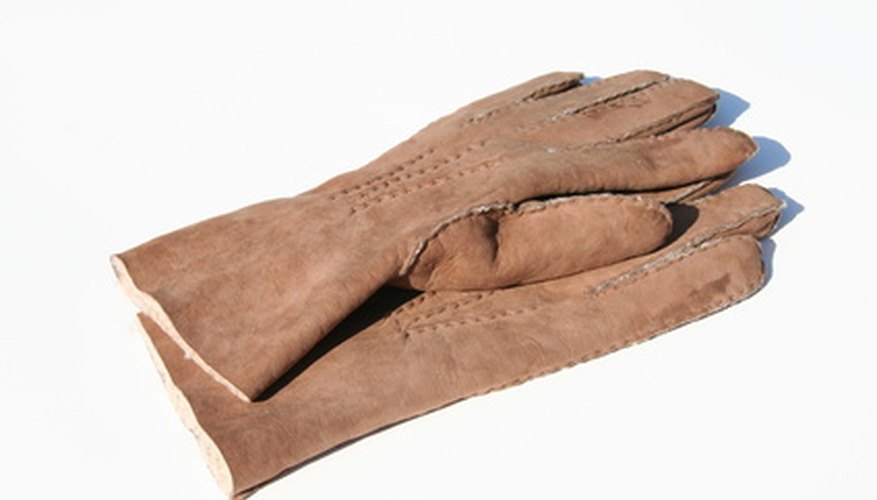Sheepskin coats have many significant attributes, many of which are a result of the remarkable wool-leather combination: it retains its shape, it resists snags, tears, wrinkles, soiling, pilling and shedding, its flame and water resistant and stays warm even when wet. Most of all, it's an extremely breathable fabric, keeping you cool in the summer and warm in the winter. However, it's not completely flawless and can wear out due to excessive use. Luckily, you can fix most rips or holes yourself.
Rips and tears
Thread your needle and knot it at the end. Pinch the ends of the ripped sheepskin between your fingers and sew 1.2 cm (1/2 inch) before the rip starts, sewing over and reinforcing the stitches that are already there. It's best to sew on the inner side of the coat, against the sheepskin, penetrating into the leather.
- Thread your needle and knot it at the end.
- Pinch the ends of the ripped sheepskin between your fingers and sew 1.2 cm (1/2 inch) before the rip starts, sewing over and reinforcing the stitches that are already there.
Sew small, tight stitches over the rip matching the size of the stitches already on the coat. Stitch slowly and hold the leather taut to monitor an even stitch length. If desired, sew two rows of stitches, directly on top of each other to reinforce the area.
Sew 1.2 cm (1/2 inch) past the rip on the stitches that are already there and knot your thread on the inner side of the coat. Knot it several times to ensure tightness and cut away extra thread.
Add a dab of glue, such as leather glue or rubber cement to the inside of the seam. According to Shaeffer this helps your seam remain flat, and also fills in any needle holes you might have created in the sheepskin with your needle.
Larger holes
Purchase a patch of sheepskin that matches the colour of the leather and wool of your coat. You can buy such patches at fabric stores or at car upholstery repair shops.
Cut a patch that is just faintly larger than the hole in your coat. You just need a slight perimeter that will rest around the hole by 1.5 mm (1/16 inch).
Trim the wool side of your patch around the edges so that you create a faint circumference of leather around the patch.
- Purchase a patch of sheepskin that matches the colour of the leather and wool of your coat.
- Trim the wool side of your patch around the edges so that you create a faint circumference of leather around the patch.
Test the glue first on scraps of sheepskin.
Apply leather glue or rubber cement to this perimeter. Wait for the glue to become tacky before pressing the patch onto the hole, covering it. Allow it to dry according to the manufacturer's instructions, giving it at least 24 hours.
TIP
Be sure to use a sharp needle designed for sewing leather and extremely strong thread, also meant for leather. Experiment with sheepskin scraps before sewing or gluing.
